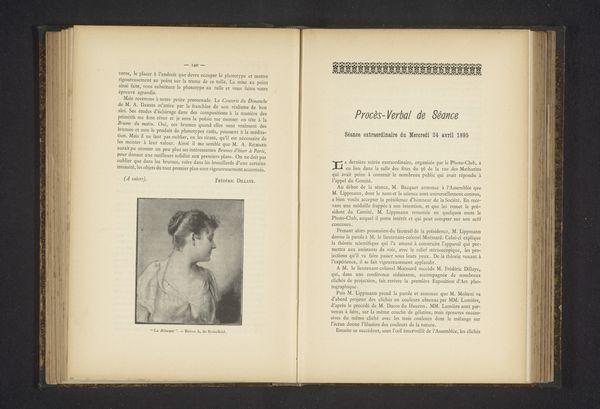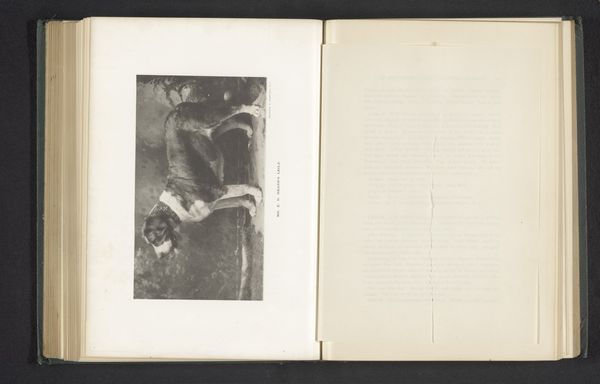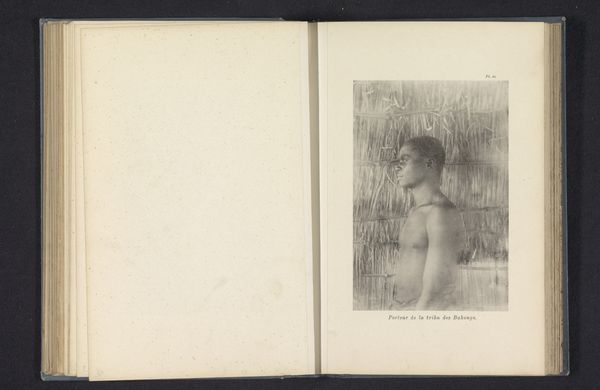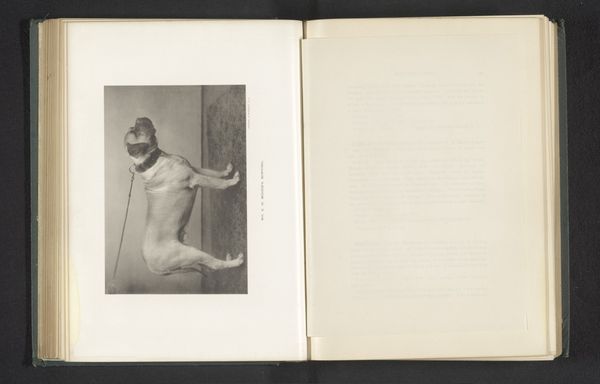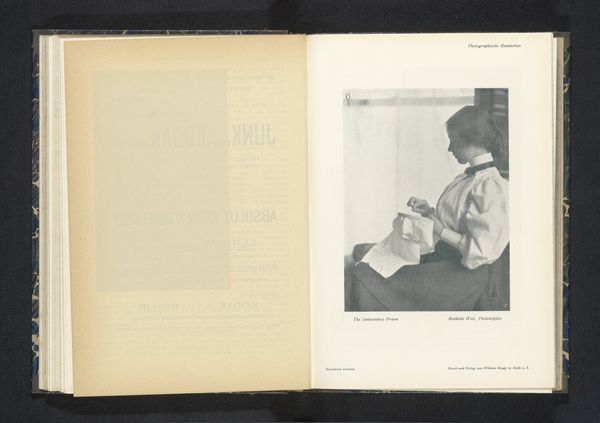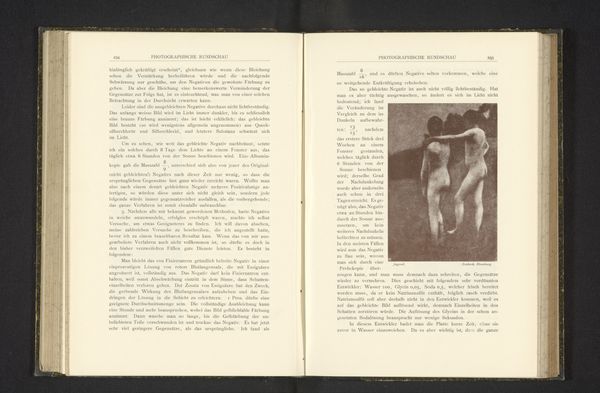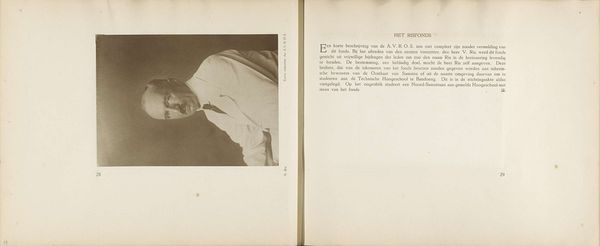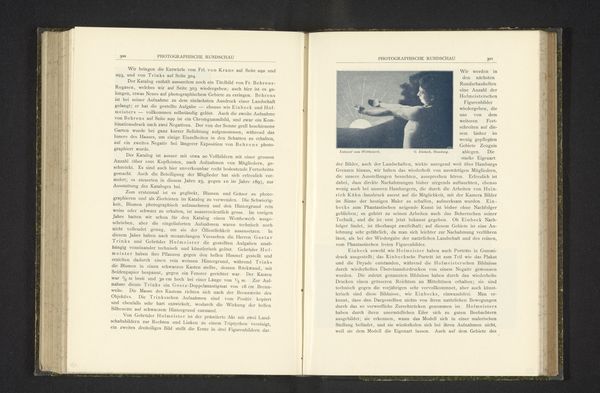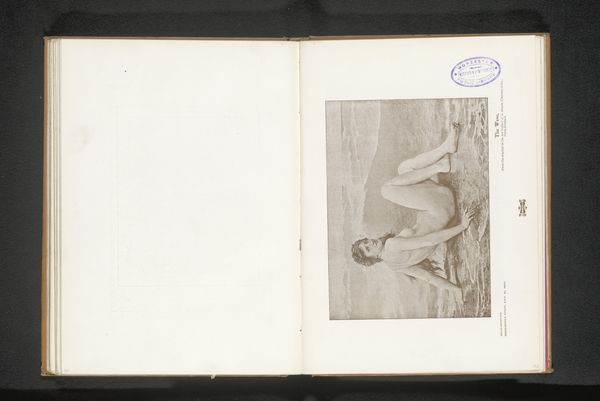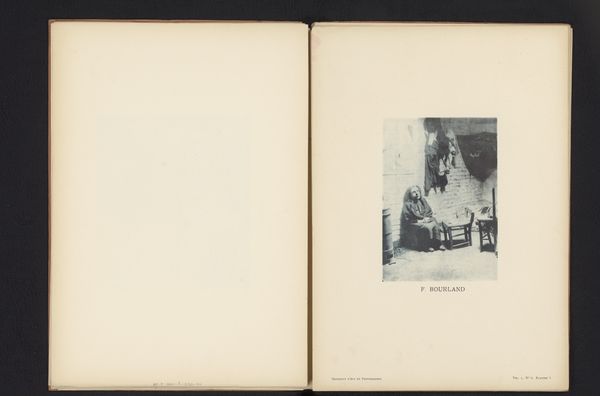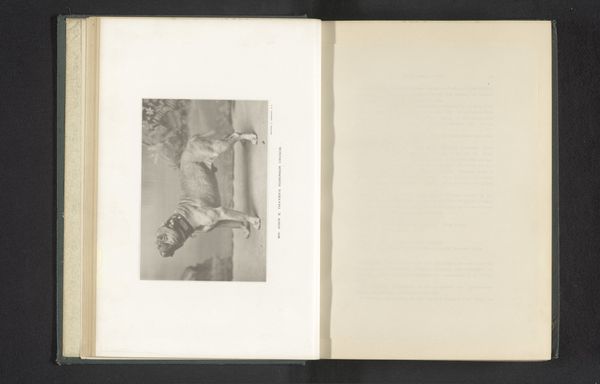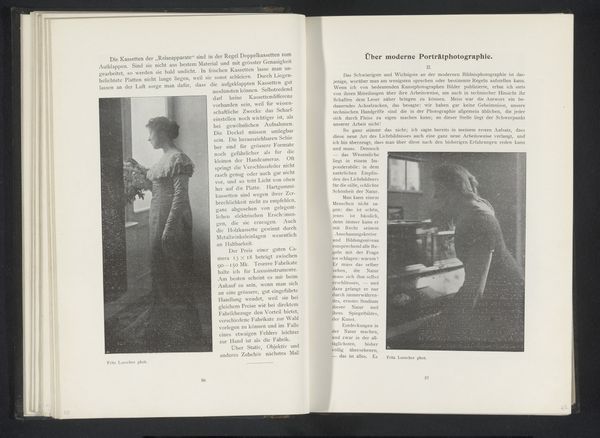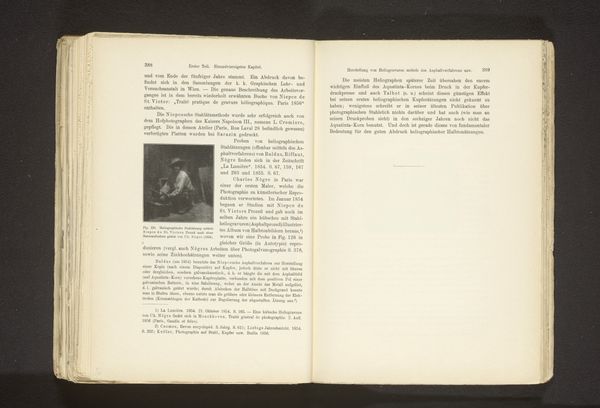
photography, gelatin-silver-print
#
portrait
#
photography
#
gelatin-silver-print
Dimensions: height 145 mm, width 104 mm, height 280 mm, width 210 mm
Copyright: Rijks Museum: Open Domain
Curator: The bleak tones of this 1928 gelatin-silver print immediately grab attention. We see here a portrait, almost clinical in its starkness, captured by the Hospitaal Batak Instituut. Editor: Yes, the contrast heightens the somber mood. I immediately notice the subject's hunched posture and downcast gaze; his physical discomfort feels palpable. Curator: This image offers a haunting look at the global history of disease and public health. This is an early photograph and document, showing the individual, racialized, socialized dimensions of illness in an institutionalized context. The subject, identified as "Mielin," is noted as a male patient suffering from smallpox, captured on one of his sick days. Editor: Right, and the use of gelatin silver as the printing method underscores the historical materiality. Think of the labor involved in producing such images in the early 20th century. The act of documenting like this wasn't just for medical advancement; it reflected the power dynamics between the colonizer institution and colonized body. What type of social system enables the dehumanization of individuals so much that you don’t even name a picture’s subject “smallpox patient,” instead using language and dehumanization to define him? Curator: Absolutely. The institutional setting cannot be ignored; it implicates how the medical establishment objectified patients, especially within colonial power structures. I find myself reflecting on whose narratives were being prioritized and how Mielin’s personal experience intersects with broader social narratives. Who holds authority here and in similar environments? How did he feel? Editor: Indeed. Thinking about the context in Sumatra and the colonial-era healthcare, consider the materiality too. Gelatin silver printing made image replication easier than older processes, enabling this wide dissemination. It also reveals an implicit cultural exchange via art form that had material ramifications and economic importance within healthcare, as photography was crucial in gathering data from those on the ground. Curator: Precisely. So much is embedded within this photograph – Mielin's suffering, institutional biases, and material practices of care and recording. Editor: Definitely. A seemingly simple photo opens into larger concerns related to health, identity, history and colonialism. Curator: A convergence that transforms this work beyond documentation. Editor: Agreed.
Comments
No comments
Be the first to comment and join the conversation on the ultimate creative platform.
